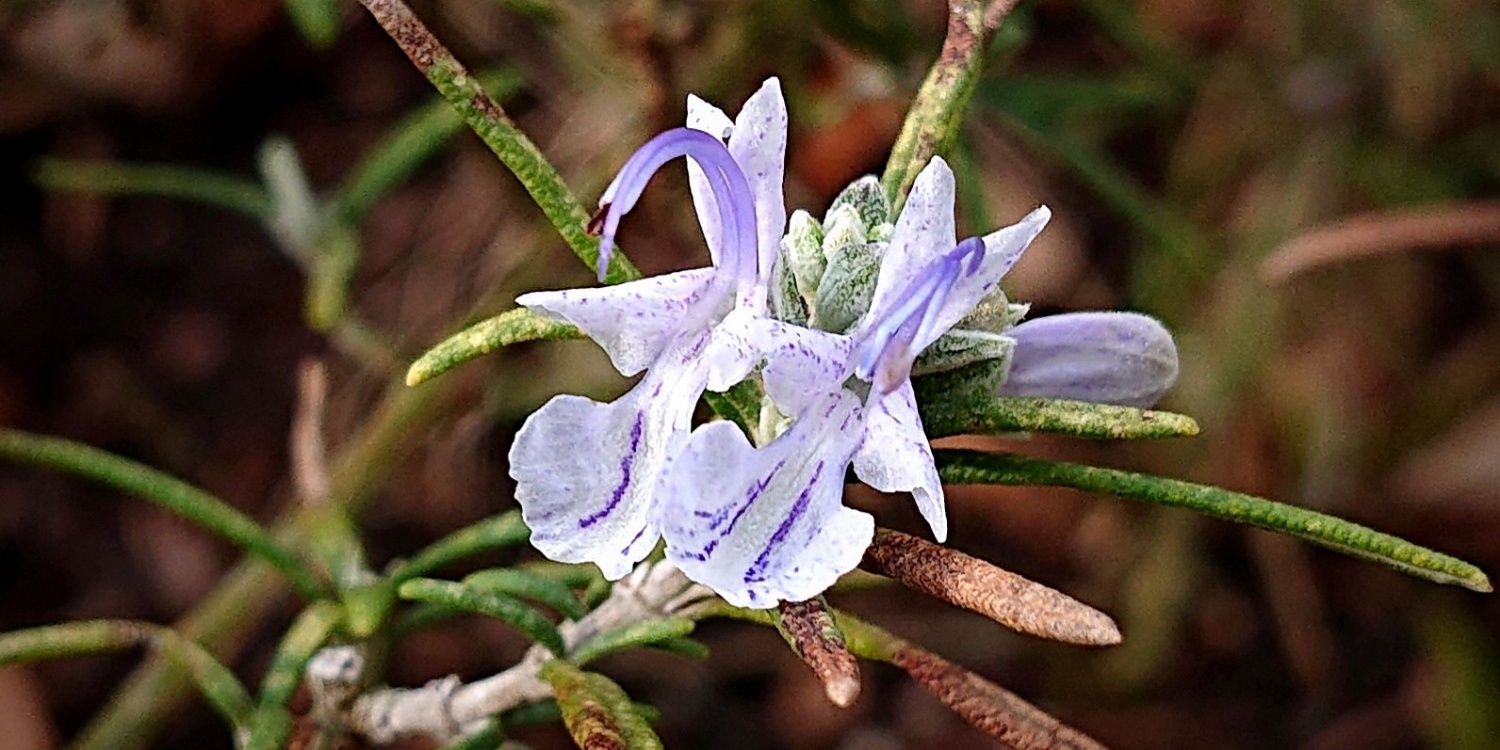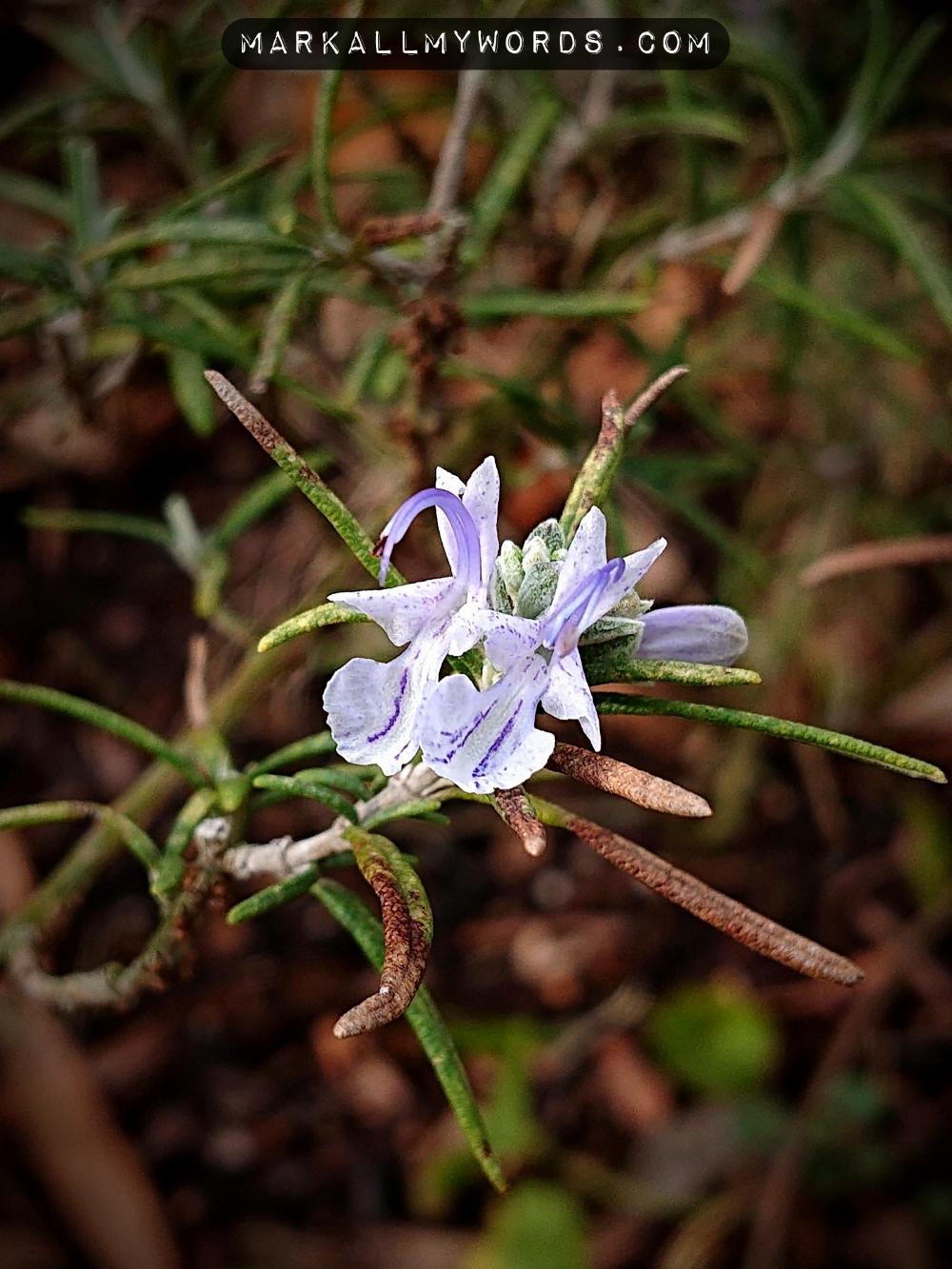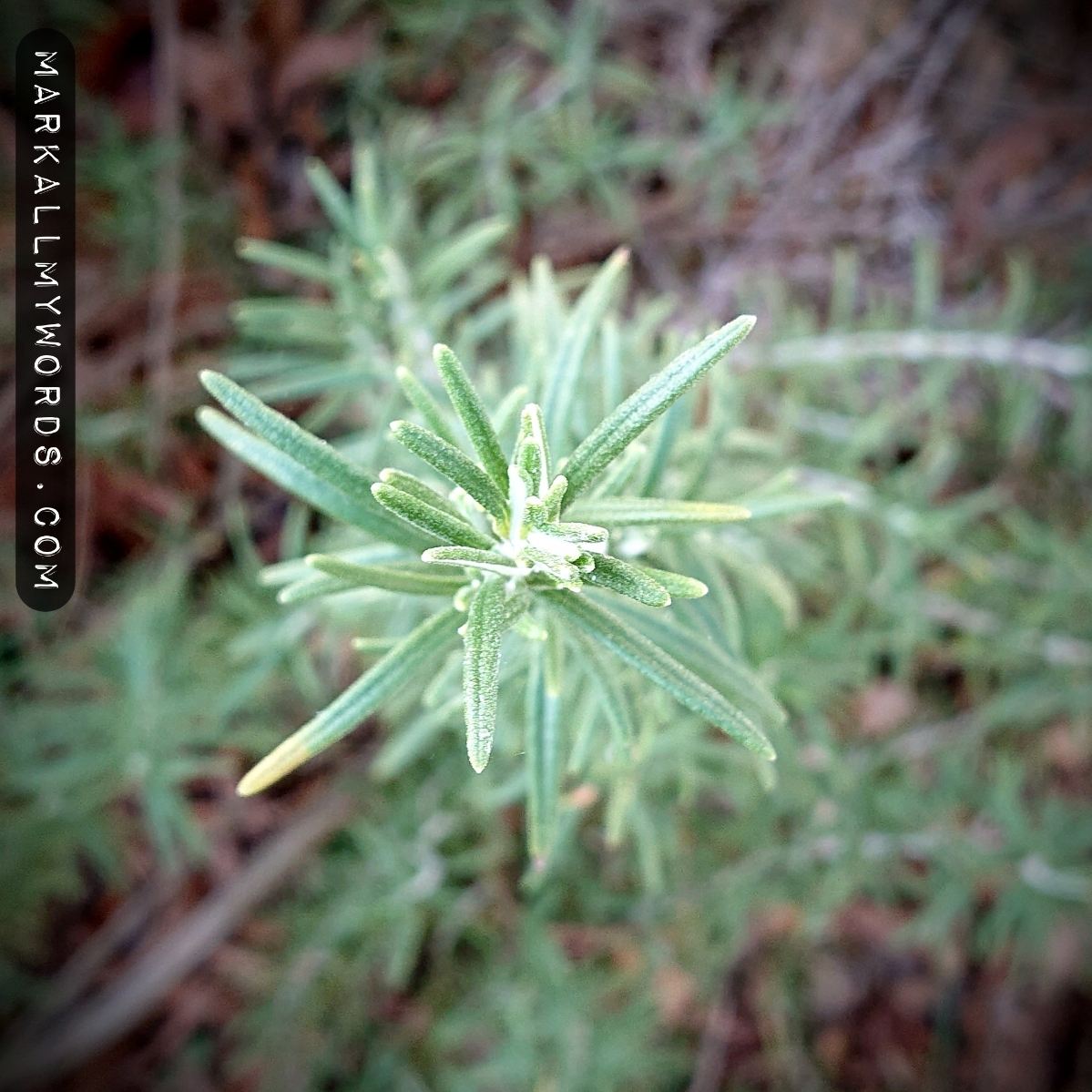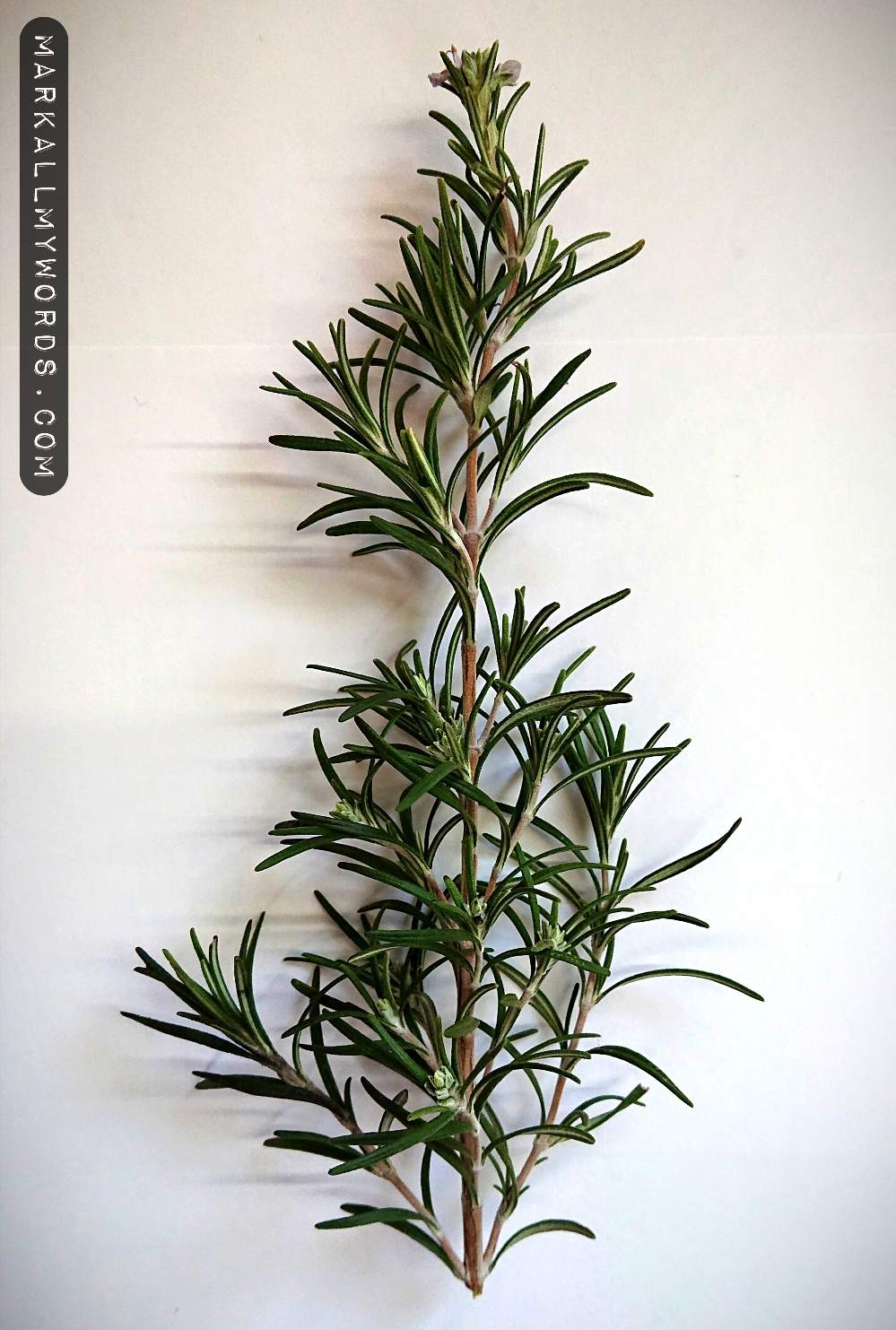
I’ve written about herbs here on Mark All My Words many times over the past few years. Considering the health issues I’ve been facing over the past two years in particular, there is more than ample reason for this.
But even if you’re perfectly healthy and have had no major illnesses or injuries in your life — in which case, you’re very lucky — there are still benefits to be had from incorporating medicinal plants into your life. And there’s really no easier way to introduce yourself to medicinal plants than with rosemary (Salvia rosmarinus), the herb of fond remembrance.
Overview
Rosemary is a very old herb, with its earliest mention in cuneiform tablets dating back to 5000 BCE. And though it grows wild in areas adjacent to the Mediterranean, it’s also extremely hardy in a variety of climates, frequently tolerating temperatures as low 20° F and as high as 110° F, with little need for watering in anything but the driest climates. As such, it’s one of the toughest domesticated plants in common use.

And thanks to its fragrant aroma, attractive flowers, and verdant foliage, it’s also nice to look at too. Growing up to six feet tall, it can be pruned to almost any shape and fit almost any space, as long as it has a good amount of sunlight and drainage. The stems are tough and woody when allowed to grow without cutting and are very resistant to damage, whether from fungus, insect, or weed-eater. The flowers are very small (frequently less than a fourth of an inch), orchid-like, and lavender, blue, or white in color.
The part of rosemary that’s familiar to most poeple, however, is the leaf. Narrow, pointed, and fibrous, rosemary leaves are incredibly fragrant when rubbed, even after they’ve been dried. They’re usually dark green in color, though they may vary between light green and gray depending on the cultivar.

And they’re also the part of the plant most commonly put to culinary use.
Culinary Uses
[Before harvesting or consuming wild plants, make sure you have the permission of the landowner and an understanding of considerations for use.]
One of the most frequent culinary uses of rosemary is herb-roasted chicken. Whether it’s chicken soup, chicken tenders, or a whole baked chicken, rosemary is a fantastic accompaniment to this most common of meats, imparting a slightly pungent, fresh, almost pine-like aroma and flavor.
Rosemary is also occasionally used in traditional breads, where the fermentation of the grain helps to soften its pungency, allowing the flavor to mellow and disperse. And though I no longer eat wheat or grain of any kind since I’m on the paleo diet, I still fondly remember the soothing aroma of homemade rosemary bread rising from my oven, filling my house with a note of cozy invitation.

Another culinary use of rosemary is in infused vinegar, where it creates a condiment of particular subtlety and freshness. If you use distilled vinegar as I do, the flavor is especially clean and clear, rising to the forefront of any flavor palette without overwhelming it.
Then of course there’s the use of rosemary that bridges the gap between culinary and medicinal, namely rosemary tea. Though it’s a bit more of an acquired taste than the other culinary uses I’ve mentioned, rosemary tea is nonetheless very easy to make, requiring nothing but rosemary leaves, a tea strainer, and hot water — though you might also want some honey and a bit of patience as your tea steeps.
Medicinal Uses
Though the medicinal uses of rosemary aren’t quite as well-substantiated as those of herbs like turmeric, garlic, and ginger, there’s nonetheless a considerable amount of evidence pointing to the usefulness of rosemary for many areas of human health.
Foremost among those is increased circulation, which probably accounts for the majority of the other health benefits of rosemary. Though I have yet to find a source that indicates the exact biochemical pathway by which rosemary does this, it may have to do with rosemary’s anticoagulant properties, which cause the blood to thin and thereby make the transport of nutrients and metabolites more effective.
Another prominent medicinal use of rosemary is as a carminative, or digestive tonic. Due to the abundance of tannins — which are highly alkaline and therefore reduce the acidity of the gut — rosemary has a reputation for alleviating upset stomach, indigestion, diarrhea, nausea, and other digestive ailments.
Beyond that, rosemary has been scientifically proven to be neuroprotective, thereby playing a role in the prevention and treatment of Alzheimer’s Disease. This occurs mostly thanks to two of its biochemical constituents, carnosol and carnosic acid, which act as electrophiles (essentially cellular lightning rods). By catching stray electrons, these two constituents help to inhibit damage to the brain, thereby reducing the likelihood of an individual developing Alzheimer’s.

The most widely known use of rosemary, however, is the one that Shakespeare noted 400 years ago:
“There’s rosemary, that’s for remembrance; pray you, love, remember . . . ”
(Hamlet, Act IV, Scene V)
And, as you may have guessed from the scientific evidence regarding carnosol and carnosic acid, Shakespeare was right. Taking into account the fact that rosemary increases circulation and reduces the likelihood of blood clots, it only makes sense that an additional neuroprotective property would make rosemary ideal for improving memory, that most crucial of neural functions and the thing that makes us who we are, more than any other.
With the New Year recently behind us, this takes on added significance. For in order for us to move forward in life, we must first look back and remember where we’re coming from. And by remembering where we’re coming from — perhaps with the aid of a little rosemary — we will remember who we really are and the good we can do for ourselves, for the plants that help us, and for the planet that makes all our lives possible.
Rosemary is the best herb I’m using! It gives me some memories every time!
LikeLiked by 2 people
Rosemary is a a wonderful herb
..especially with lamb
LikeLiked by 1 person
Very interesting! Thanks for stopping by and liking my post!
LikeLike
Gosh! Super fascinating. I love that Shakespeare was onto this stuff 400 years ago.
LikeLike
Total genius.
LikeLike
Cool post.
Imagine more people relied on Mother Nature to cure illness instead of relying on synthetic pharmaceuticals to treat illness…
LikeLike
Raised my awareness of herbs, specifically rosemary. Thanks.
LikeLike
I just returned from the Sonoran desert in CA. Huge, wild Rosemary patches scattered through the hiking path made it an elevated experience to hike there regularly!
LikeLiked by 1 person
Rosemary is also very nice with fish, on steamed salmon it’s a delight. Will defitively try the tea, as I frequently suffer from stomach ache.
LikeLike
I have a rosemary bush that seems to thrive on neglect! I love it with lamb as well as chicken.
Can you make rosemary tea? I love mint tea, but reading your blog, it occurred to me that a tea might be good.
LikeLiked by 1 person
I love the smell of rosemary and the quote from Shakespeare! 🙂 I love to cook with it but have had a difficult time trying to get it to grow in the summer.
LikeLike
I love reading that you have success in growing such a wonderful herb! 🙂
LikeLike
🙂 maybe I should try to grow it again!
LikeLike